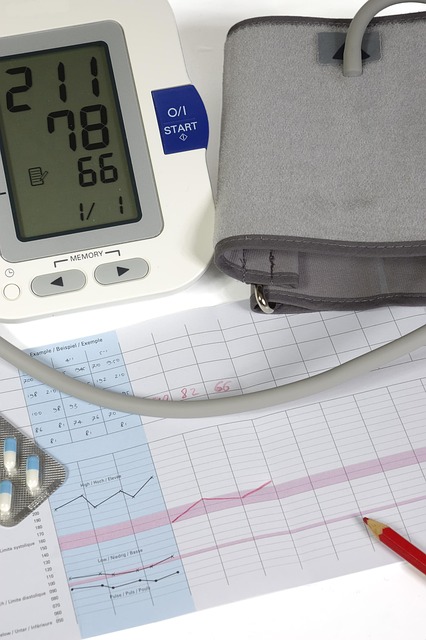Liver Function Tests (LFTs) are essential components of routine Well Person Blood Tests in the UK, monitoring liver health by measuring enzymes like ALT and AST. Elevated levels may indicate damage or inflammation, prompting medical professionals to order additional tests, consider patient symptoms and history, and potentially perform imaging studies or biopsies for diagnosis and treatment planning. Normal LFT results within recommended ranges suggest optimal liver health.
In the UK, a standard liver function test (LFT) is a crucial well person blood test that assesses the health of the liver. This comprehensive screening provides valuable insights into the liver’s functionality and overall metabolic health. The article delves into the intricacies of LFTs, guiding medical professionals through the interpretation of results for healthy individuals and highlighting when further investigation is necessary. By understanding these key indicators, healthcare providers can effectively monitor and maintain their patients’ liver health.
- Understanding Standard Liver Function Tests
- Interpretation of Results for Healthy Individuals
- When to Consider Further Investigation
Understanding Standard Liver Function Tests
Liver function tests (LFTs) are a set of blood tests that play a crucial role in evaluating liver health, especially when screening or diagnosing liver diseases in the UK. These tests are often part of a routine Well Person Blood Test, which is commonly recommended for individuals without any apparent health issues. The primary purpose is to detect any abnormalities in liver function and provide valuable insights into its overall condition.
Standard LFTs typically include measurements of enzymes like alanine aminotransferase (ALT), aspartate aminotransferase (AST), alkaline phosphatase (ALP), gamma-glutamyl transferase (GGT), and bilirubin levels. Each enzyme has a specific role in liver health, with elevated levels often indicating potential damage or inflammation. For example, AST and ALT are indicators of liver cell damage, while ALP and GGT are associated with bile production and flow. Understanding these test results is essential for medical professionals to make informed decisions about patient care and further diagnostic procedures.
Interpretation of Results for Healthy Individuals
For a well person blood test in the UK, understanding the interpretation of results is key to maintaining good health. Normal liver function tests (LFTs) typically show elevated levels of alanine aminotransferase (ALT) and aspartate aminotransferase (AST) within a reference range. These enzymes are indicators of liver health; elevated levels suggest potential liver damage or inflammation. Typically, an ALT level below 40 units per litre (U/L) for men and 30 U/L for women is considered normal in the UK.
A well-person blood test should also reveal unremarkable levels of bilirubin, albumin, and prothrombin time (PT). Bilirubin, a breakdown product of red blood cells, is usually within the range of 7 to 17 micrograms per decilitre (mcg/dL) in adults. Albumin, a protein produced by the liver, should fall between 3.5 to 5.0 grams per decilitre (g/L). PT measures the time it takes for blood to clot and is usually within 10 to 14 seconds for men and slightly longer for women. These results collectively indicate that the liver is functioning optimally in a healthy individual.
When to Consider Further Investigation
Liver function tests (LFTs) are a routine part of many Well Person Blood Tests in the UK, offering valuable insights into liver health. However, interpreting these results requires clinical judgment, as abnormal findings don’t always indicate serious liver disease. When considering further investigation, several factors come into play. Medical professionals should assess the patient’s symptoms, medical history, and risk factors for liver damage, such as alcohol consumption or viral infections.
An elevated alanine aminotransferase (ALT) or aspartate aminotransferase (AST) level might warrant additional tests to identify potential causes, including hepatitis, fatty liver disease, or more severe conditions like cirrhosis. Other investigations may include imaging studies (e.g., ultrasound, MRI), specialized blood tests for viral hepatitis, or biopsies for definitive diagnosis and treatment planning.
In conclusion, standard liver function tests (LFTs) are a crucial Well Person Blood Test UK tool for medical professionals to assess liver health. By understanding the interpretation of results, particularly for healthy individuals, and knowing when further investigation is needed, healthcare providers can effectively monitor and manage liver-related issues early on. Regular screening plays a vital role in maintaining overall well-being, especially given the silent nature of many liver conditions.
